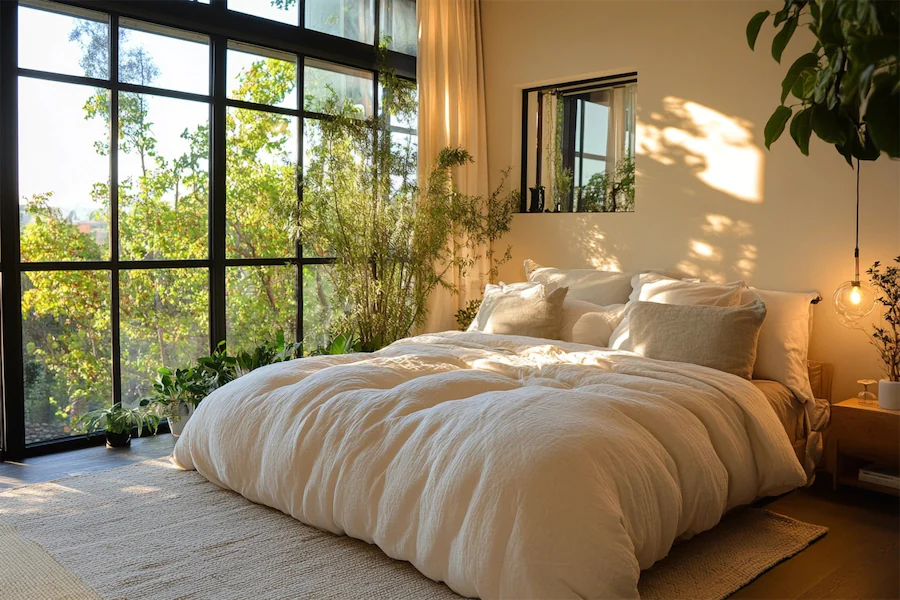Incorporating biophilic design into your bedroom fosters a deep connection with nature, enhancing well-being and creating a tranquil retreat.
History and Origins of Biophilic Design
The term “biophilia,” meaning “love of life,” was popularized by biologist E.O. Wilson in the 1980s, suggesting an inherent human affinity for nature. Biophilic design integrates natural elements into built environments, aiming to improve health and productivity by reconnecting individuals with the natural world.
Key Features of a Biophilic Bedroom
- Natural Materials: Utilizing materials like wood, stone, and natural fibers introduces organic textures, fostering a sense of warmth and comfort.
- Indoor Plants: Incorporating a variety of houseplants enhances air quality and brings life into the space. Plants such as peace lilies, snake plants, and pothos are excellent choices for bedrooms.
- Natural Light: Maximizing natural light through windows or skylights regulates circadian rhythms and creates a serene atmosphere. Sheer curtains can diffuse sunlight, maintaining privacy while allowing light to filter through.
- Nature-Inspired Colors: Employing earthy tones and natural hues evokes the calming essence of the outdoors, promoting relaxation. Shades of green, blue, and brown are particularly effective.
- Organic Shapes and Patterns: Incorporating furniture and decor with curves and patterns found in nature adds visual interest and harmony. This can include botanical prints, wave patterns, or furniture with rounded edges.
Applications of Biophilic Design in Bedrooms
- Living Walls: Installing a green wall introduces lush greenery, serving as a striking focal point and enhancing the room’s natural ambiance.
- Natural Scents: Incorporating natural aromas through essential oils or scented candles with fragrances like lavender or eucalyptus promotes relaxation and sleep quality.
- Water Features: Adding a small indoor fountain introduces the soothing sound of flowing water, enhancing tranquility.
Considerations When Designing a Biophilic Bedroom
- Maintenance: Selecting low-maintenance plants and materials ensures the space remains sustainable and stress-free. Succulents and air plants are excellent low-maintenance options.
- Balance: Harmonizing natural elements with existing decor prevents the space from becoming overwhelming. Aim for a cohesive design that integrates biophilic elements seamlessly.
- Personalization: Incorporating personal touches, such as nature-inspired artwork or cherished natural objects, makes the space uniquely yours. This personalization enhances the emotional connection to the environment.
Conclusion
Embracing biophilic design in your bedroom creates a harmonious sanctuary that nurtures a connection to nature, promoting relaxation and well-being. Thoughtful integration of natural elements transforms the bedroom into a restorative haven.
